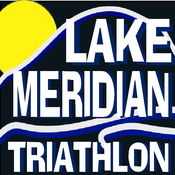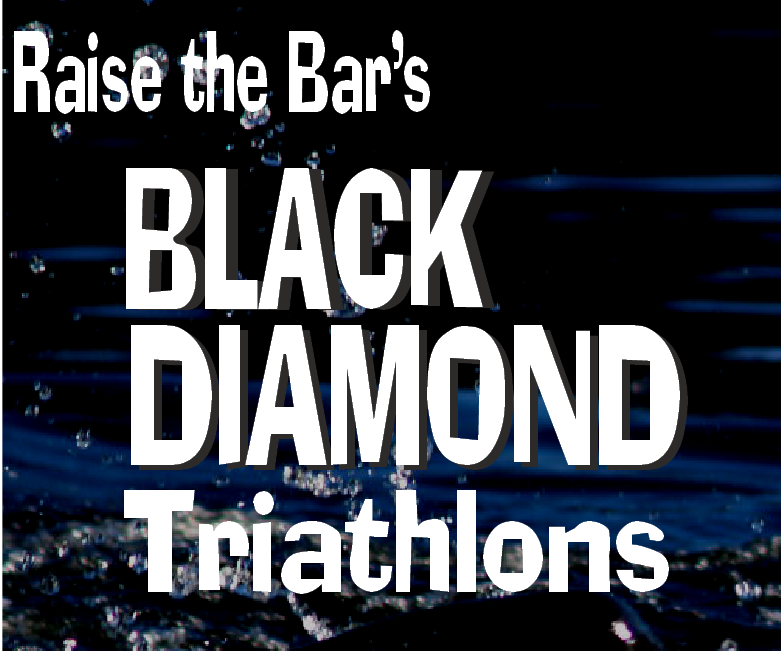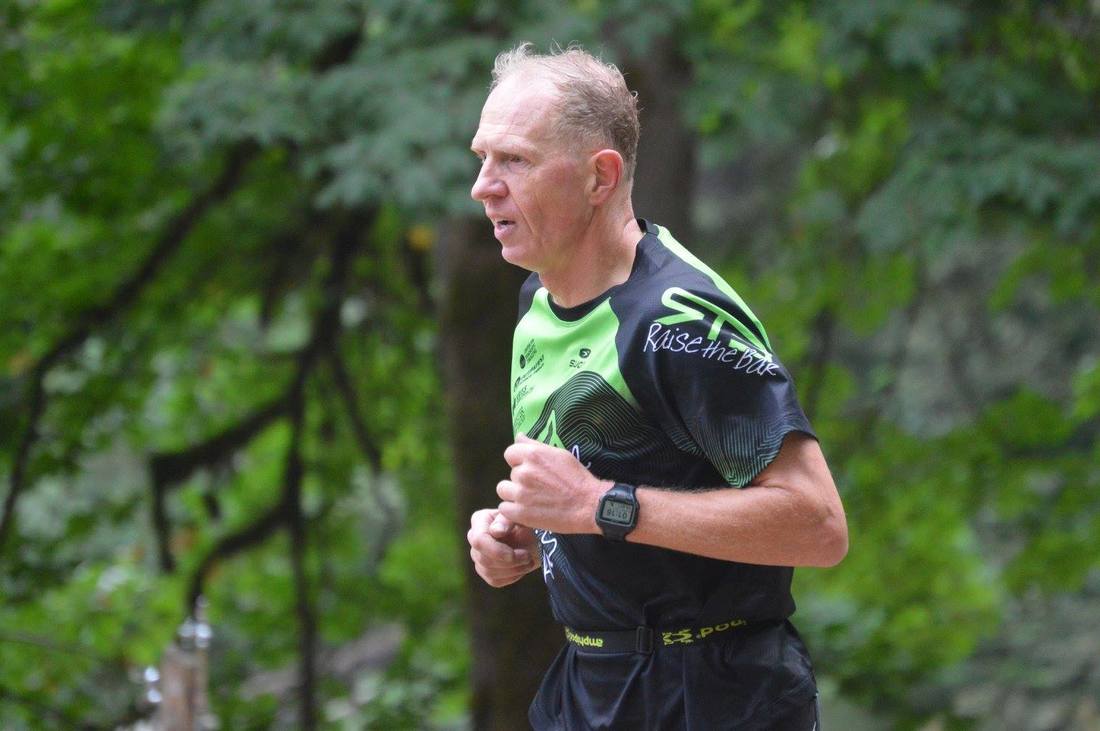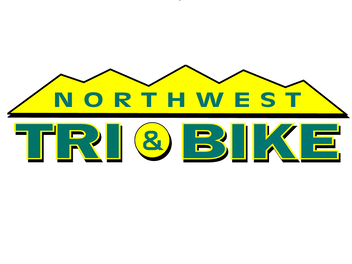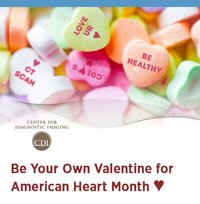 Contributed by Center for Diagnostic Imaging On a holiday where the symbol is a heart, we thought it was a good time to share our heart-specific screening exams at Center for Diagnostic Imaging (CDI). As endurance athletes in excellent shape, you are not necessarily immune to the threat of heart disease. Beginning in your 40’s, with a family history of heart disease, you may want to consider some preventative health exams. CDI has two screening heart exams that can detect heart disease in its earliest stages.
Instead, your medical provider may recommend an ultrasound exam that measures the thickness of the carotid artery wall. Carotid Intima Media Thickness (C-IMT) screening.
According to CDI Radiologist, N. Jarrod Durkee, M.D., “Young patients and athletes with traditional risk factors for cardiovascular disease often have normal coronary artery calcification (CAC) CT scans due to their age and lifestyle. These patients can be improperly classified as low risk patients when CAC is used, because only artery calcifications are measured”. Dr. Durkee added, “CIMT ultrasound not only looks for carotid calcifications, but also looks at the thickening of the carotid wall to determine the patient's cardiovascular risk. This results in better evaluation of young patients and athletes and helps to properly classify these patients at low or high risk for cardiovascular disease”.
Both exams are performed by highly-trained technologists and interpreted by on-site, board-certified, specialized radiologists. These exams are not usually covered by insurance, unless they meet Medicare/Medicaid guidelines. Ask your medical provider if one of these would be right for you. To schedule an exam, call 855-643-7226. This article was submitted by Center for Diagnostic Imaging. Learn more about CDI and their nine outpatient medical imaging centers throughout the Puget Sound at www.myCDI.com/WA.
0 Comments
 “I went to PT for my shoulder and it didn’t work.” We have all heard a version of this story from a friend, family member or acquaintance. The next part of the story typically involves one of two things: a long-winded explanation of the current status of the shoulder pain complete with live demonstrations of all movements that make the offending limb hurt, or a recollection of splints, slings, expenses and time off associated with the surgery that followed the failed course of physical therapy. What is not usually verbalized is the belief underlying the initial statement: all physical therapy is equal. Somewhere between its humble beginnings at towards the end of the 19th century and today, the physical therapy profession absorbed a generalized identity. Unlike the field of education, where we readily accept that there are both varying degrees of quality of educators and potential of relevance of those educators to the student, Physical Therapists are not often differentiated from physical therapy. We, as a society, seem to believe that physical therapy for a shoulder injury will essentially look the same whether it is delivered by the Physical Therapist at the clinic across the street or the one closer to home. In short, there is an expensive – both in terms of dollars spent and unnecessary, ongoing pain – misunderstanding out there: a PT is a PT is a PT. As a 15-year veteran of the profession, I can assure you that this is far from true. With over 300 accredited physical therapy doctorate level programs in the U.S. alone, thousands of institutes providing continuing education courses and 35 unique practice settings, the physical therapy profession is far from uniform. But, most importantly, advances in postgraduate clinical training are currently widening the gap between the Physical Therapist across the street and the one closer to home. 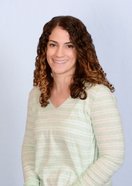 Sara Winder OPT Kent Easthill Sara Winder OPT Kent Easthill After earning their license to practice, Physical Therapists can but are not required to choose from a variety of rigorous clinical specialization tracks. Physical therapy residencies and fellowships are in-clinic, structured training programs designed to significantly advance skills in specialties such as sports and orthopedics. Residencies and fellowships include one year of ongoing mentoring with an experienced therapist and post-professional coursework. “Participating in the orthopedic residency program helped me learn to streamline my examination and treatment to get to the problem faster, and target each client’s specific needs. For athletes, this means I can get them back to their sport as safely and quickly as possible,” says Sarah Winder, PT, DPT at Outpatient Physical Therapy in Kent. 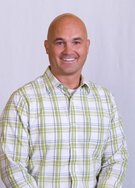 Adam Turley OPT Covington Adam Turley OPT Covington Physical Therapists can also choose to earn Board Certifications in eight specialty areas, including orthopedics and sports. To be eligible to sit for the rigorous examination, a Physical Therapist must complete at least 2,000 hours of direct patient care in their specialty area. When you see the letters “OCS” and “SCS” after a Physical Therapist’s name, you can be assured of two things. First, they have relevant clinical experience. Second, they are part of an elite group of Physical Therapists: Less than 10% are Board Certified in the United States. Because of the Board Certification process, Adam Turley, DPT, SCS, OCS, CSCS at Outpatient Physical Therapy in Covington says he has a better understanding of return to sports concepts in rehabilitation. “It’s not the letters after your name that make you a better therapist. It’s the passion about your profession that drives you to pursue those letters and the ongoing commitment to staying up-to-date with research and practice management of athletes.” Adam and Sarah are Physical Therapists who chose the less traveled path of ongoing, rigorous training and testing after graduating from PT school. Because their clinical experience and education are unique, their patient care is too. So, the next time physical therapy comes up in conversation, or you have a need for it yourself, remember Adam and Sarah. Ask your potential Physical Therapist questions such as, “Are you residency trained?” or “Do you have any Board Certifications?” Because now you are in the know: A PT is not a PT is not a PT. by Holly Pennington Outpatient Physical Therapy 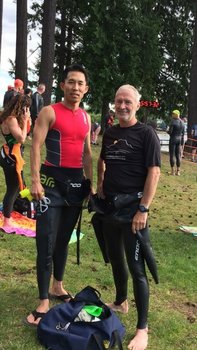 Calvin (left) at the Friday Night Swim Race Calvin (left) at the Friday Night Swim Race This is Why I "Tri" Pre-Tri I honestly never imagined that someday I’d be a road biker or a runner. I was a total adventure junkie. The sports that I enjoyed most were either driven by horsepower, or gravity. From downhill mountain biking, where we took chairlifts or trucks to take us to the top of the mountain (once in a while we’d pedal to the top), to snowmobiling, dirt biking, wake boarding, and so on. It was all too easy—just a flick of the wrist on a throttle or the free fall of gravity and the flow of adrenaline was endless. In comparison to flying down the mountain over rocks, roots, jumps, and in between trees on a mtn bike, I was totally flummoxed as to why anyone would want to cycle for hours on asphalt in a straight line. What was the point of running? At best, it seemed boring, and at worst- punishing. And then, by nothing short of serendipity, I became one of them: Lycra-clad, riding in a straight line for hours, staring mostly at someone’s rear tire or rear end for hours on end (in order to stay in the draft zone). I went from hardly ever running to my longest indoor treadmill run of 18 miles—because my training plan called for it and it was too hot and humid to run outside while on an overseas trip. The change How did this happen? It was 2 years ago, January of 2015 and I was in a small exercise room, where the TV was playing a re-run of a Kona IRONMAN race. I had heard of the IM but knew very little about anything related to the tri scene (I had never even run a 5k). I probably only watched a few minutes of the program, but it left such a strong impression on me that a number of days later I actually looked up the IM website. It was purely out of curiosity and inspiration—I honestly didn’t have any interest or desire to be involved in this kind of a sport as I never had much of an affinity for suffering or self inflicted pain. Up to this point, I’d always assumed that people who do IM races were either super athletes or amazing, sub-human android types. As I was scrolling through the website and reading interesting and inspiring stories, something caught my attention. On the FAQ's page, there was a question that read: "How do I know if I have the right stuff to do an Ironman?" The answer was: "As we’ve seen over and over again throughout the years, the mind is the most powerful element in the human body. An IRONMAN triathlon is arguably the most difficult one-day sporting event in the world, but if you have an open mind and the drive, you can do it." It was an epiphany to consider that finishing a race at the caliber of the IM was all about the mind and having an open mind. The fact that I didn’t need a college background in track and field, or have parents that were genetically gifted athletes in order to participate in an IM was enlightening! This resonated with me, as my motto has always been the old English proverb, "where there's a will, there's a way". The thought of chasing this absurd notion quickly turned into the proverbial “monkey on my back” that started to grow and grow, as I began to ask myself if I had the perseverance, the discipline, and the mental toughness to actually be an IM finisher. At first, I told myself that it was a ridiculous idea and my thoughts would cycle from, "Nah, you can't do this" to "If you were really tough, you would go for this". And, being the stubborn donkey that I am, I decided a few weeks later that I would pursue this crazy endeavor or die trying. I didn't have anything to prove to anyone else, but it was something I wanted to prove to myself. 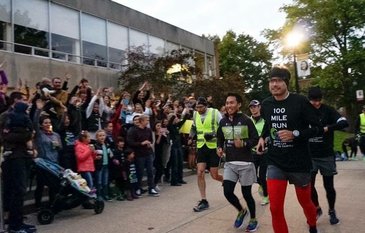 Calvin in RTB at his 100 mile run Calvin in RTB at his 100 mile run Running I knew nothing about running. So, I just started pounding the pavement and adding miles like I was Forrest Gump. If I ran 5 miles today, then I’d run 6 the following day. And as soon as I recovered, I'd add more miles. By about the 7th week of running, I ran a half-marathon distance and my legs were toast. Then, three days later I ran nine miles in the rain and mud and woke up the following morning with pain in my heel. I learned the hard way that there’s a method to the madness and one can't just pack on miles (I didn't know about the 10% rule). I had developed plantar fasciitis and had to ease off of running for nearly a month. This was very demoralizing, as I had worked so hard for the last 7 weeks. So during this time, I put my focus on my swimming and cycling. Swimming Because I knew nothing about a proper swim stroke, the swim portion posed my biggest challenge. Knowing this, I hired a great swim coach named George Garner. We met 3-4 times a month or as our schedules would allow and he took me from being a very pathetic swimmer to a much less pathetic swimmer over the course of that spring and summer. Looking back, I had one big motivator. This world of multi-sport was so new and foreign to me, and the simple fear of failure motivated me to train as hard as I could. Cycling As an avid mtn biker, the cycling came easiest for me. I just had to learn to clip in and out of pedals. During this time of training, I'd often go to the NWTB shop for my tri needs. Brad Williams and Julie Strong were very kind and helpful with all of my newbie questions. On one visit, Brad invited me to join them for their Sunday morning training rides, to which I naively accepted and showed up to. The first time, I showed up to the Sunday ride on my road bike and everyone else was on a tri-bike. It was a beautiful sunny day and all I could do was hang on for dear life and try to keep up with the group. Despite my deficiencies, everyone was so encouraging in letting me know that I was at a disadvantage trying to keep up on a road bike while everyone else was on a tri-bike. Steve Barlow even pulled up next to me and told me that he would pull me to catch up to the lead group. I hung in for about an hour and a half before I couldn't hang anymore. The encouragement and camaraderie made me want to be a part of this tribe. Needless to say, the next time I came to the Sunday ride, I showed up on a tri-bike! 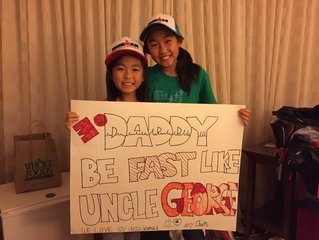 Calvin's daughters and cheerleaders Calvin's daughters and cheerleaders Intro to triathlons: That summer, in June I did my first sprint triathlon (Black Hills), in July- my first Olympic distance (Sea Fair), and in August- my first half IM (Lake Stevens). The following month in September would be the full IM, in Chattanooga. I had come in at 5 hours and 29 minutes at the half IM and my local spin instructor told me to take my half IM time, double it, and then add one hour, to make it my goal for the full IM. It sounded good to me, so my goal for Chattanooga was to shoot for a 12 hour finish. Just three weeks before the full IM event, my swim coach told me that he had something he needed to speak to me about. He shared that he had just been diagnosed with stage 4 stomach cancer and was not given much time left to live. George had become a dear friend by this time. My kids even called him "Uncle George". He was an experienced triathlete and swam competitively when he was in college. He had attempted his first IM a while back, but had to withdraw do to a very high fever during the race. So from that moment on, George became a part of the inspiration to complete my first IM. I wanted to finish this race in his honor. 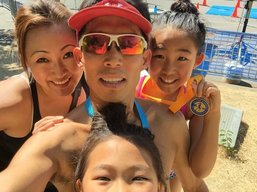 Calvin with his family Calvin with his family Race day September rolled around and race day in Chattanooga arrived. Each one of the triathlons I had participated in, in the preceding months had gone very well. I had been blessed with near perfect weather every time and Chattanooga was no exception. With an overcast morning, most of the day was in the 70s. This was truly a huge blessing for me as I had never trained in humid weather, and a big fear I had was that race day would be a hot and humid day. On top of the good weather, nutrition and hydration couldn't have gone any better. One of the highlights of the day was when I met a gal about 3-4 miles from the finish during the run. Her goal was to finish under 12 hours. She didn't sound positive about reaching her goal, but I told her we could do it! We picked up the pace and ran together for the last remaining miles, me acting as her cheerleader and we pushed as hard as we could. Finishing was grand and exactly what I had imagined it would be. It was incredibly special that my wife and kids were able to be right there, standing next to the final finish as I came through. I couldn't have asked for a better race; it was truly one of the best adventures of my life. The only bittersweet moment was my official finish time. I finished at exactly 12 hours…and 5 seconds. Really? I couldn’t have shaved off 5 seconds somewhere in the day? If only I had pee'd on the bike! But alas, as I've heard someone say, "Its just a game". Later on, I looked up the finish time of the gal that I had run the last few miles with. She had made her goal and finished just under 12 hours! It was a very sweet experience that I had at least been able to help someone else achieve their goal. 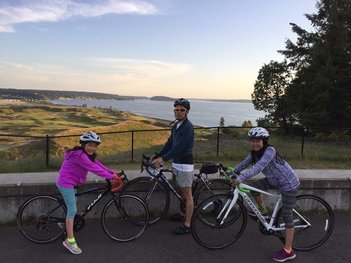 Calvin with his daughters. Calvin with his daughters. Why do I “tri”? Now that I had completed this bucket list challenge, I thought I could just transition back to my old life. But somewhere along the way, the tri experience had transformed my outlook on life, health and recreation. The ease of fun and recreation that I derived previously from the kind of sports that I participated in were no longer appealing. A few years ago, I was in Whistler to go mountain biking. Our boat guide told me that he didn't use a chairlift to take him up the mountains because he had to "earn his turns". Somewhere along this tri journey, I now understood what he had meant. I had discovered how rewarding the sense of accomplishment was that came through hard work, discipline, and perseverance. Using a throttle (horsepower) to fly up a mountain was too easy—anyone could do that. But pedaling for 100 miles or running 15 miles on a training run takes resolve and grit. I used to hate hiking, and the pain in my quads as I trudged uphill. Once I started tri training and running, hiking and running in the woods turned into one of my favorite pastimes. I’ve grown to love the beauty of the outdoors and nature. Through this tri journey, I’ve experienced a fascinating transformation in my life that has caused me to appreciate the things that I once had a disdain for and now care less for the mundane and status quo aspirations of life. My tri journey led me into the world of ultra running as I got to participate in my first 50-miler at the Grand Canyon this last October as we ran from "rim2rim2rim" for 48 miles and then two more miles on the top of the South rim of the Canyon to complete a 50-miler. And then, two weeks later, participated in my first 100-miler in the Midwest. These are all things that, three years ago, I never would have imagined myself every doing in my life because they were so antithetical to my worldview. But now, I view those things—hardship and adversity—as adventures and challenges to be embraced. I like to think of it as suffering in a "controlled" environment. Yes, you can tap out at any time, but quitting is way too easy. Enduring the struggle and pain is deeply formative, character building and rewarding. The tri changed me We are “fearfully and wonderfully made”. The tri experience helped me to realize the limitless capabilities of the human body and mind. The "tri" journey has shaped me into a more grateful person. I’m thankful that I have the opportunity to be able to participate in these kinds of enriching and life-enhancing adventures. Thus, I have come to be very thankful, especially for the gift of health. I believe that one of the best gifts I can give to my loved ones is the gift of good health. I want to be in my 70s and 80s and be able to run around and play with my grand kids. Knowing that leading a "tri" life will increase my chances of living a vibrant and healthy life is a huge added blessing and motivator. Deep down, I believe that everyone wants to make a difference in the lives of others. I love to be inspired and to be an inspiration to others. I've discovered that the "tri" environment is an ideal context for this. We live in a cynical and negative world—a world that is constantly bombarded with depressing news. Training and simply spending time with others who share a similar, positive, “can do” approach to life, is refreshing. For example: On one of those long Sunday morning bike rides, Michelle Murphy told me about her Mt. Rainier summit, and consequently inspired me to set my own goal to summit Mt. Rainier. Seeing Georgeta Gruescu celebrate her 100th running race with a 100-miler ultra inspired me to go for my first 100-miler. Hearing about Brad Williams and Dave Kramer sparked in me a desire that someday I might be able to do a cycling trip in Vermont during their beautiful fall colors. During my journey, I’ve been able to help a good friend of mine who was 429 pounds last May. He lost over 60 pounds as he trained with me to do the rim2rim2rim challenge at the Grand Canyon last October. While he didn’t complete the R3, he hiked 43 miles of the Grand Canyon and fitness has now become a part of his life. Now, he’s preparing to do the IM in Whistler with me this coming summer! One of my favorite things that transpired through this tri journey is a non-profit organization that I helped co-found called the F5 Challenge. F5 Challenge brings people together in a faith-based environment at desirable “bucket list” type locations to do epic fitness challenges. Through this organization, we’ve inspired countless people to get into an active life of fitness. Our first event was held at the Grand Canyon last October, where we offered multiple challenges. Over 110 people showed up. Six completed the entire 48 mile "rim2rim2rim". 30 people hiked 24 miles one way from the North rim to the South rim. The others chose hikes according their fitness levels from 6 to 12 to 18 miles. Our next challenge event will be at the Grand Tetons in September. Looking back, it’s amazing how just coming across a random few minutes of IM Kona on T.V. could change the course of my life in such a big way. I’m constantly thankful for the way the "tri" experience has made such a positive impact in my life. I look forward to the exciting adventures that lay ahead as I continue to make fitness an integral part of my life. |
Raise the BarRace reports, upcoming events, news, and more, from RTB. Archives
September 2023
|
 RSS Feed
RSS Feed
